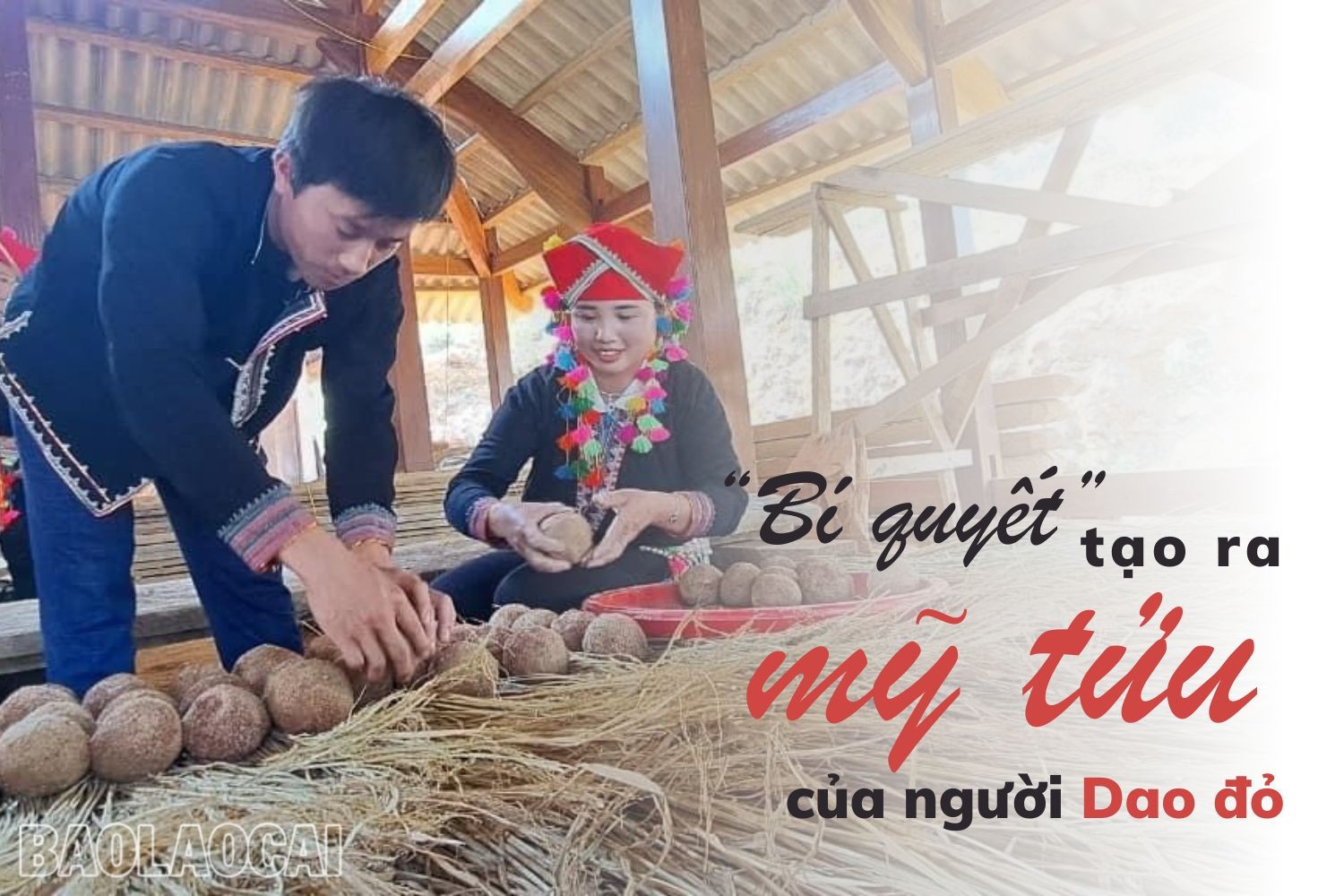
LCĐT - The wine of the Red Dao people in Nam Can and Nam Mien villages (Tham Duong commune, Van Ban district) is called "my tuu" by many people. The "secret" to making this special wine is that the wine is distilled from rice fermented with forest leaves.
Yeast for making wine is made very elaborately. The Dao people believe that there are only two occasions in a year, Qingming and Guwu, when they go into the forest to pick leaves to make yeast, because only on those days can the yeast be made well and good wine be made.
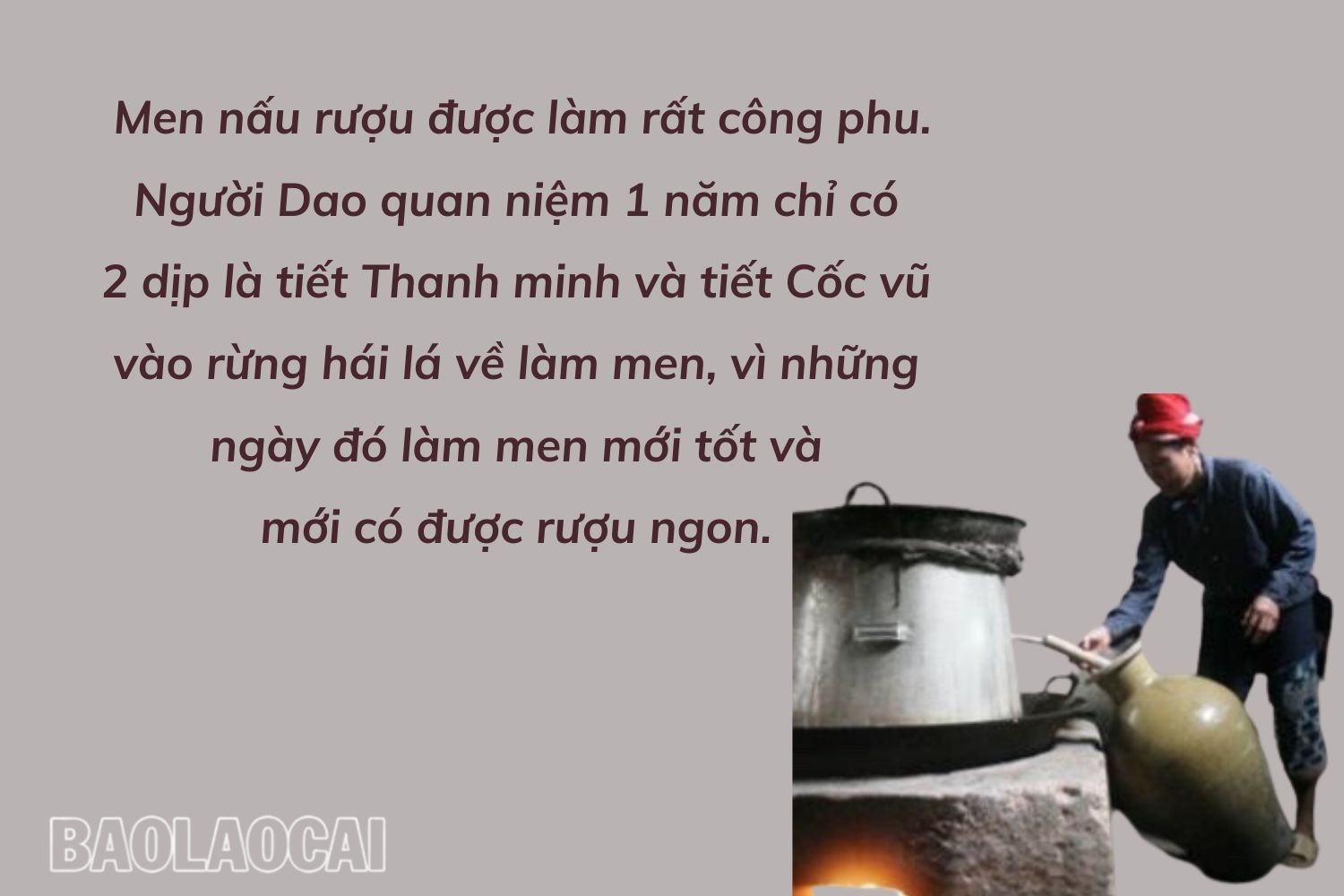
To better understand the “secret” to creating this special flavored wine, I went to Nam Mien village - where 100% of the Red Dao people live. In Nam Mien, every family has someone who knows how to make traditional yeast from leaves to make wine. According to the people here, to make one yeast ball, you need to use 20 - 25 types of forest leaves. Making yeast from leaves requires experience, understanding of forest plants and knowing when to pick leaves, roots and forest plants for the yeast to be delicious.
Mrs. Trieu Thi Nay is one of the experienced people in choosing leaves and making yeast in Nam Mien. Having followed her mother into the forest to find leaves to make yeast since she was young, she knows all the uses and flavors of the leaves. Bringing down from the kitchen attic dark brown yeast leaves, as big as bowls, Mrs. Nay said: These yeasts can be kept for many years to use gradually. When the right flavor is extracted, the yeast will be fragrant.
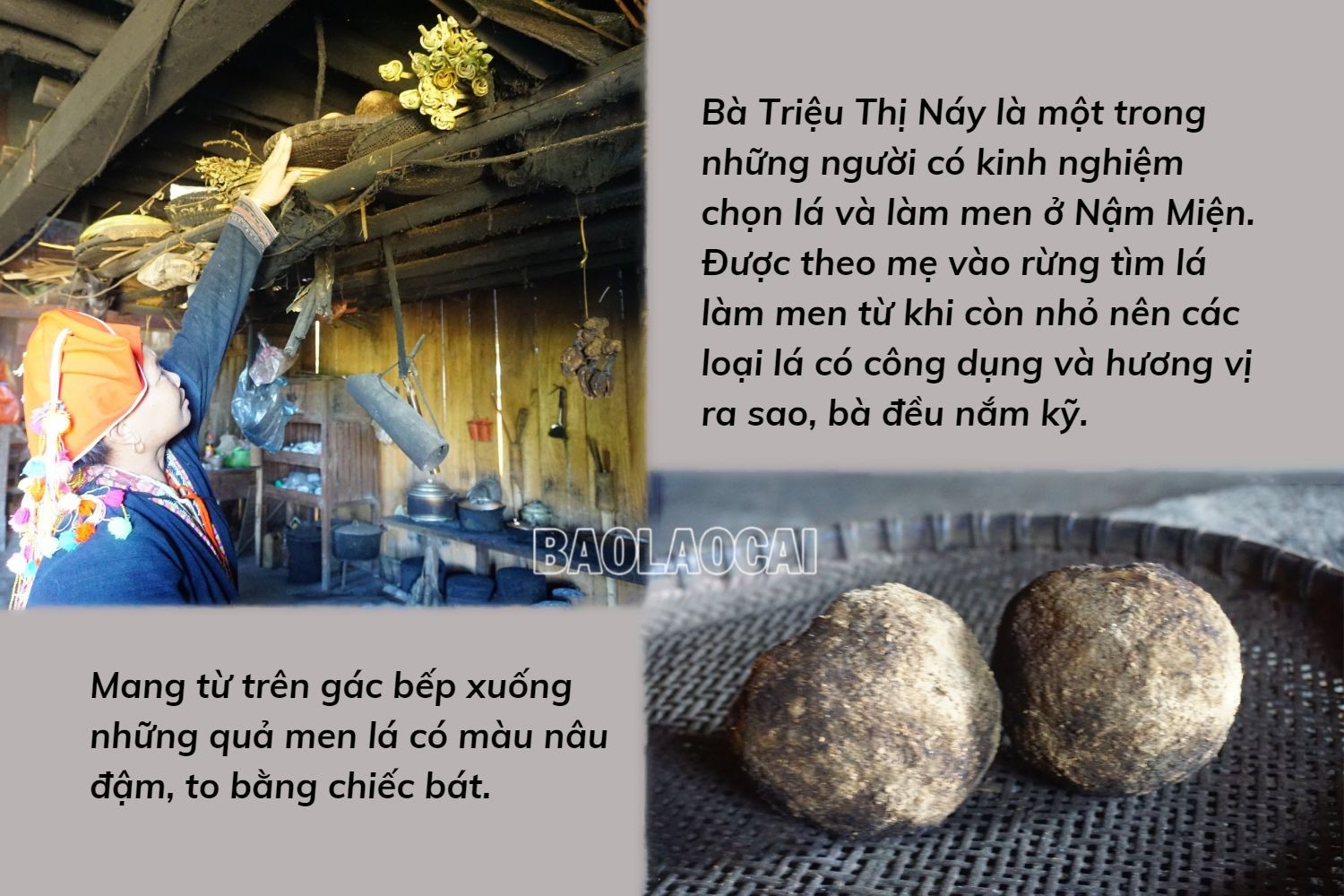
Mrs. Nay shared more about how to make leaf yeast: The leaves picked from the forest are chopped, dried on the kitchen loft until dry, then crushed, mixed with bran powder in a ratio of 40 sticky rice, 60 non-sticky rice. The tree trunks are boiled to make yeast water, then shaped into round balls. After being shaped, the yeast balls are rolled evenly over a layer of original yeast to prevent mold and speed up fermentation time. After that, the yeast is dried on the kitchen loft, then stored in a straw basket in a dry, airy place.
Once the fragrant yeast leaves are available, the next step is to cook, ferment and distill the wine. The wine is distilled from sticky rice. The sticky rice is steamed, then washed with water to cool it down and prevent it from sticking. The yeast is crushed, mixed with the sticky rice, and then fermented for 3 days. The fermented rice is put into a jar, then water is poured in to soak it again, after about 11 days or so, it is distilled into wine. “The Red Dao wine has a very special flavor, anyone who has drunk it once will feel the difference, not mixed with wine from other places. That special flavor comes from the rice, the water source, the distillation method, but the secret is still from the yeast leaves,” said Ms. Trieu Thi Nay.
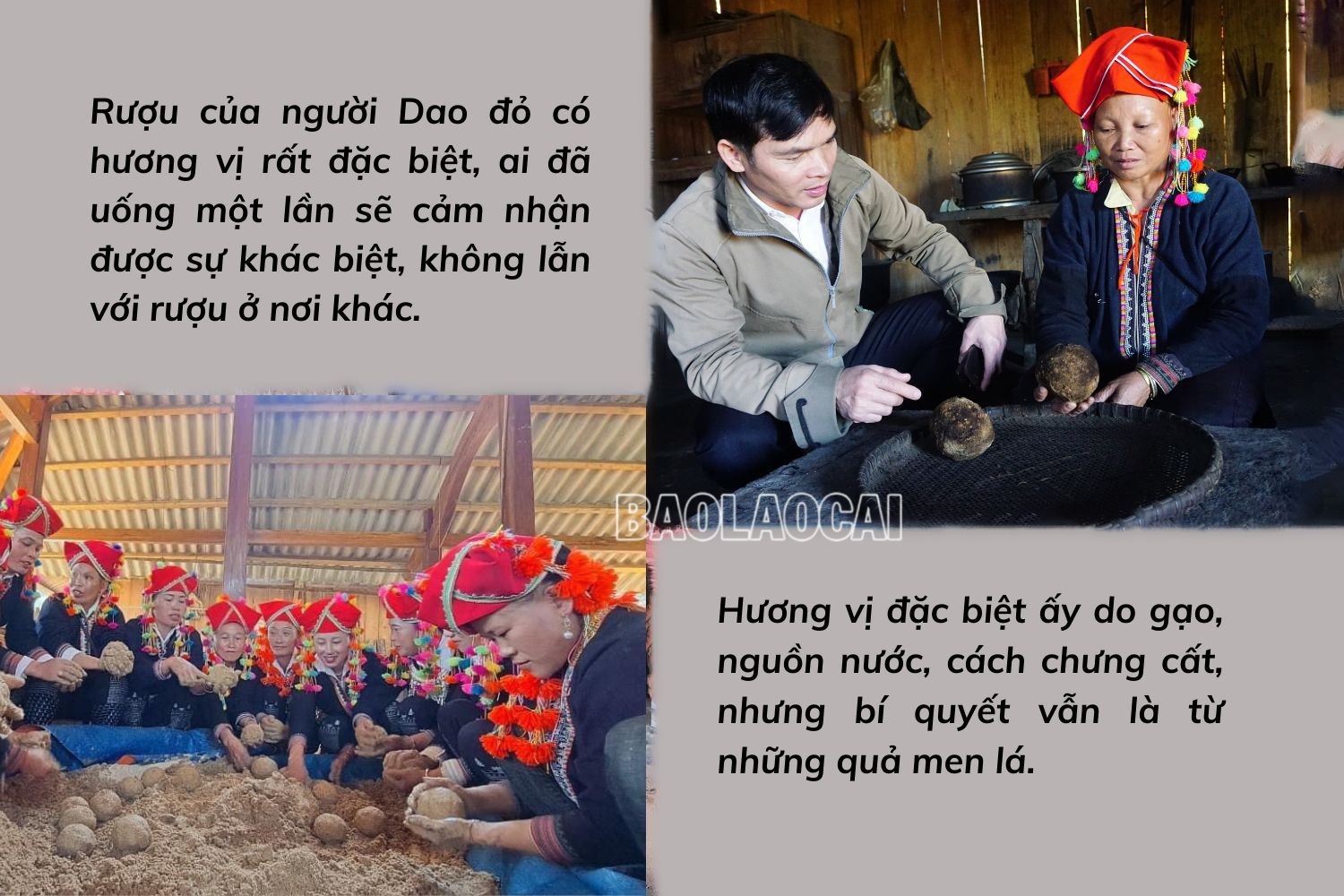
In recent years, the Red Dao wine in Nam Mien not only serves the needs of the family, but people also sell it to increase their income. With the desire to preserve the traditional profession and protect the health of users, the Women's Union of Tham Duong commune has mobilized the Red Dao women in Nam Mien village to establish a group to produce traditional yeast leaves. Currently, the village has 20 households making yeast and brewing wine to supply the market, creating jobs and increasing family income.
Source



![[Photo] Opening of the 13th Conference of the 13th Party Central Committee](https://vphoto.vietnam.vn/thumb/1200x675/vietnam/resource/IMAGE/2025/10/6/d4b269e6c4b64696af775925cb608560)




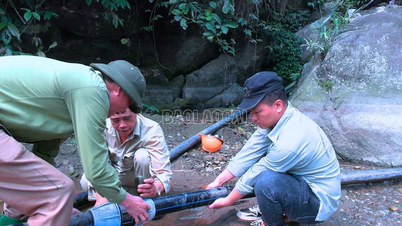
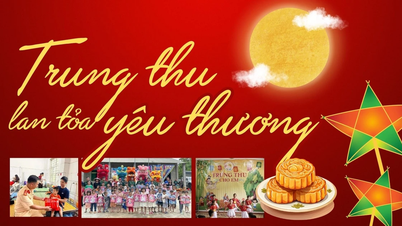
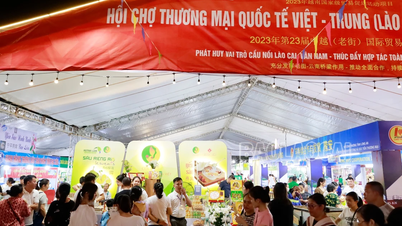
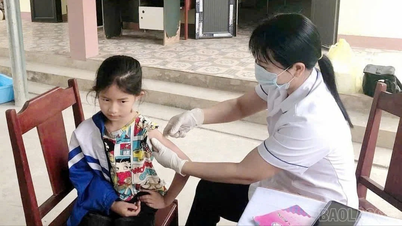
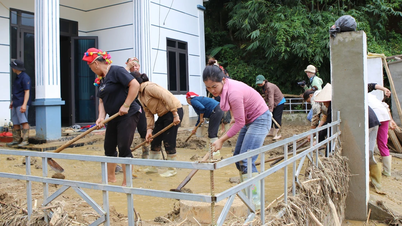
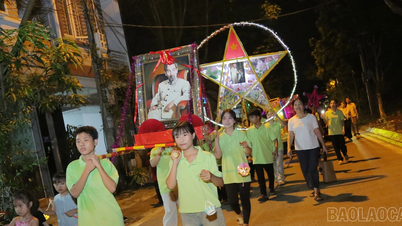




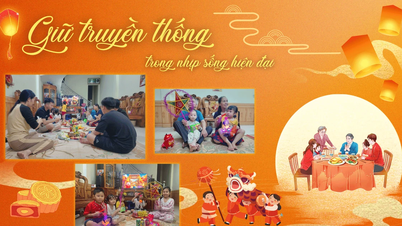
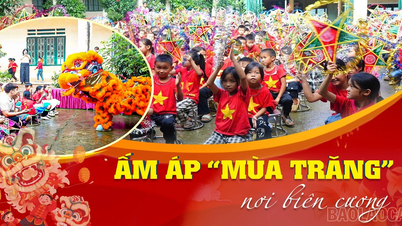
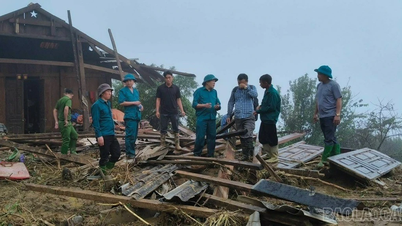


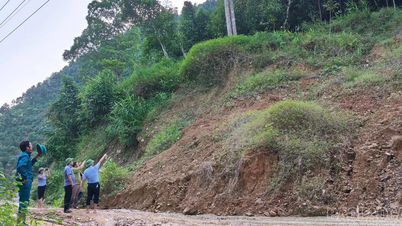











































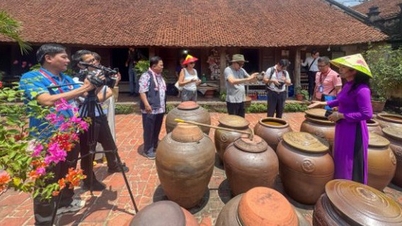
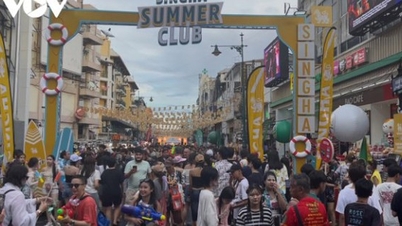
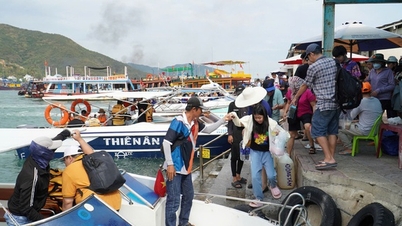
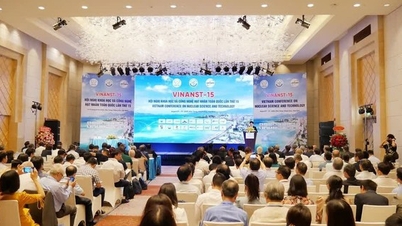

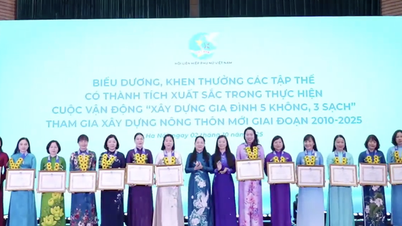
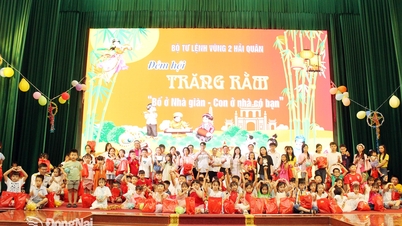

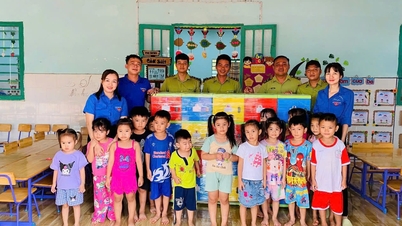
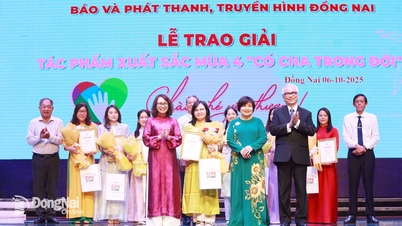
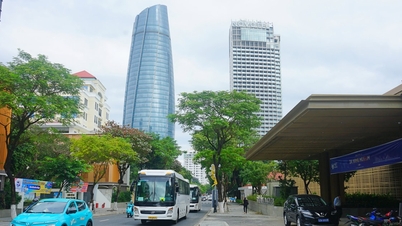



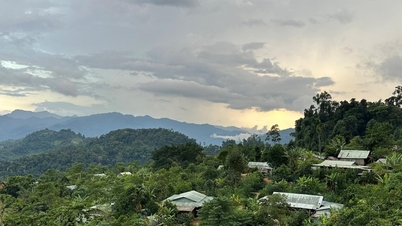












Comment (0)